Abstract
1. A system proposed in a previous article as a model of responses of visual cells has been analysed with the purpose of predicting the features of responses to single absorbed photons.
2. As a result of this analysis, the stochastic variability of responses has been expressed as a function of the amplification of the system.
3. The theoretical predictions have been compared to the results obtained by recording electrical responses of visual cells of Limulus to flashes delivering only few photons.
4. Experimental responses to single photons have been tentatively identified and it was shown that the stochastic variability of these responses is similar to that predicted for a model with a multiplication factor of at least twenty-five.
5. These results lead to the conclusion that the processes responsible for visual responses incorporate some form of amplification. This conclusion may prove useful for identifying the physical mechanisms underlying the transducer action of visual cells.
Full text
PDF


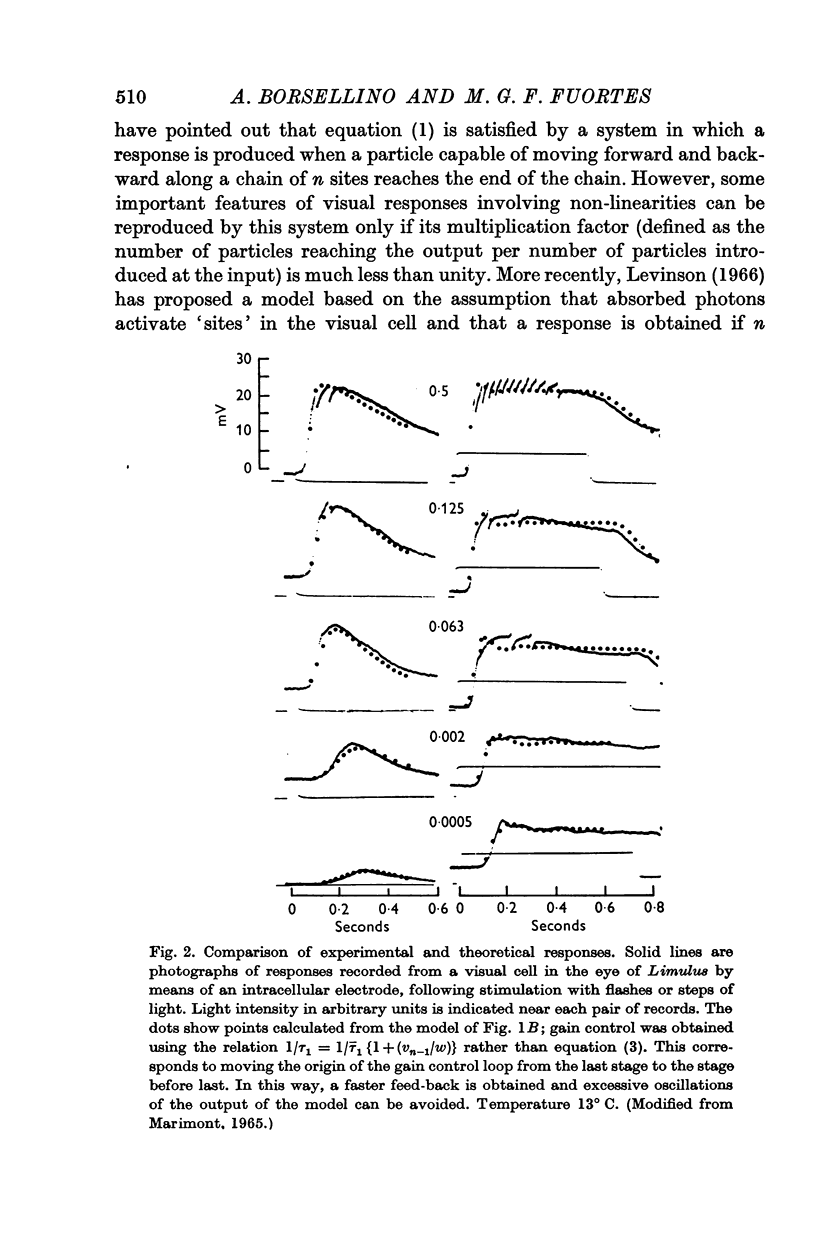
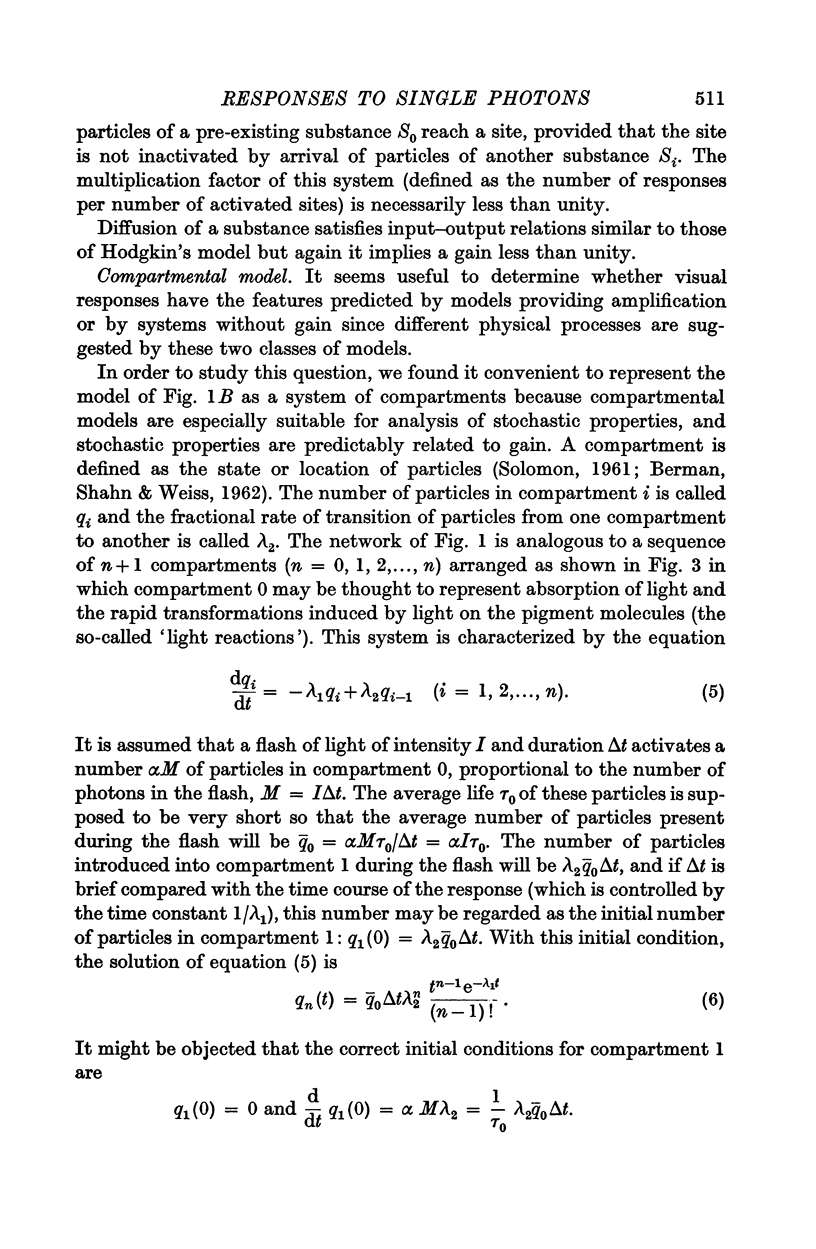

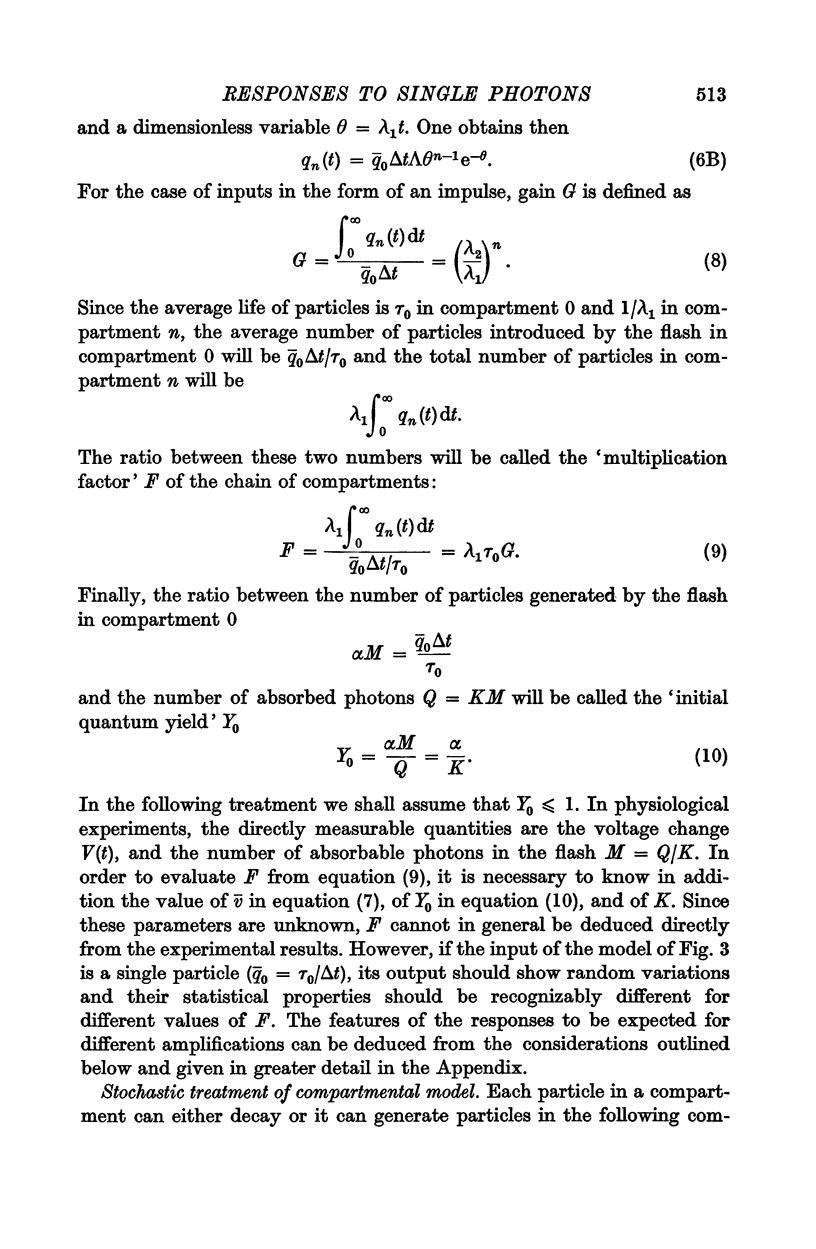


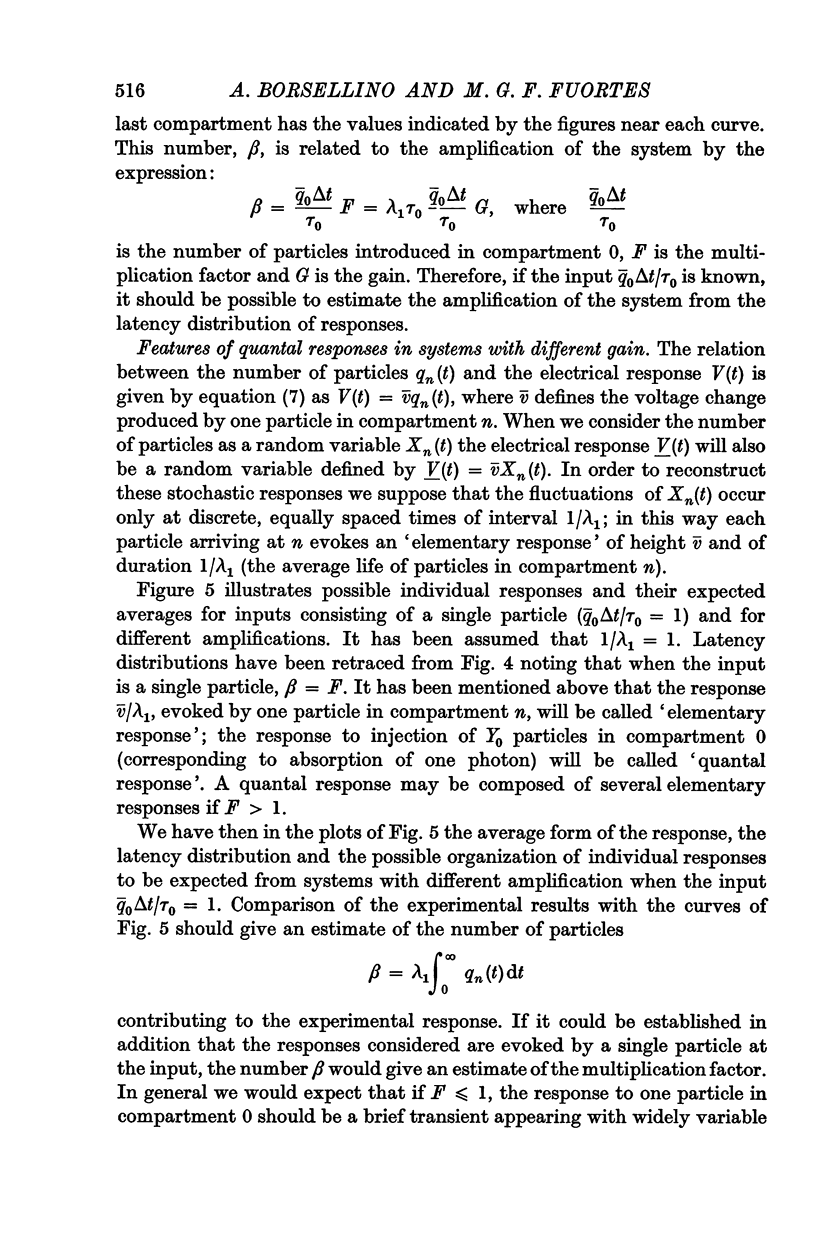
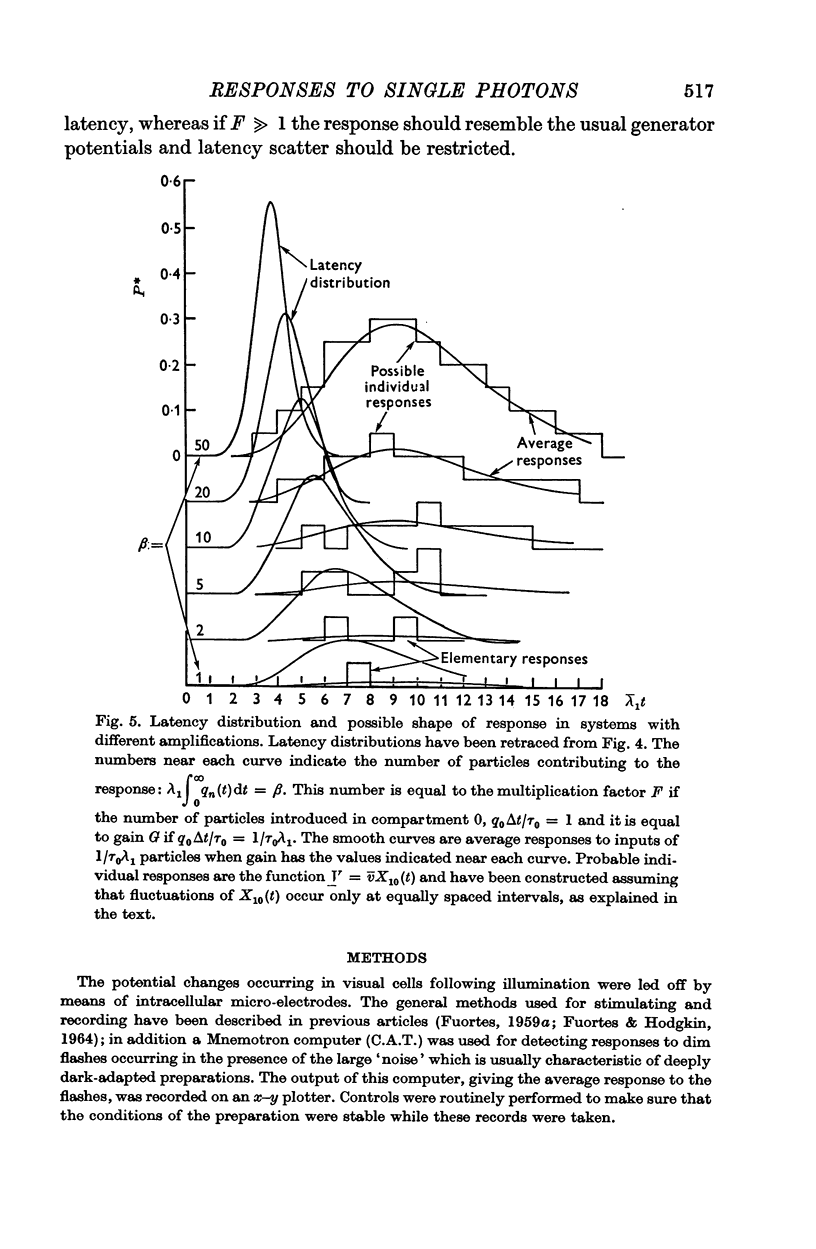
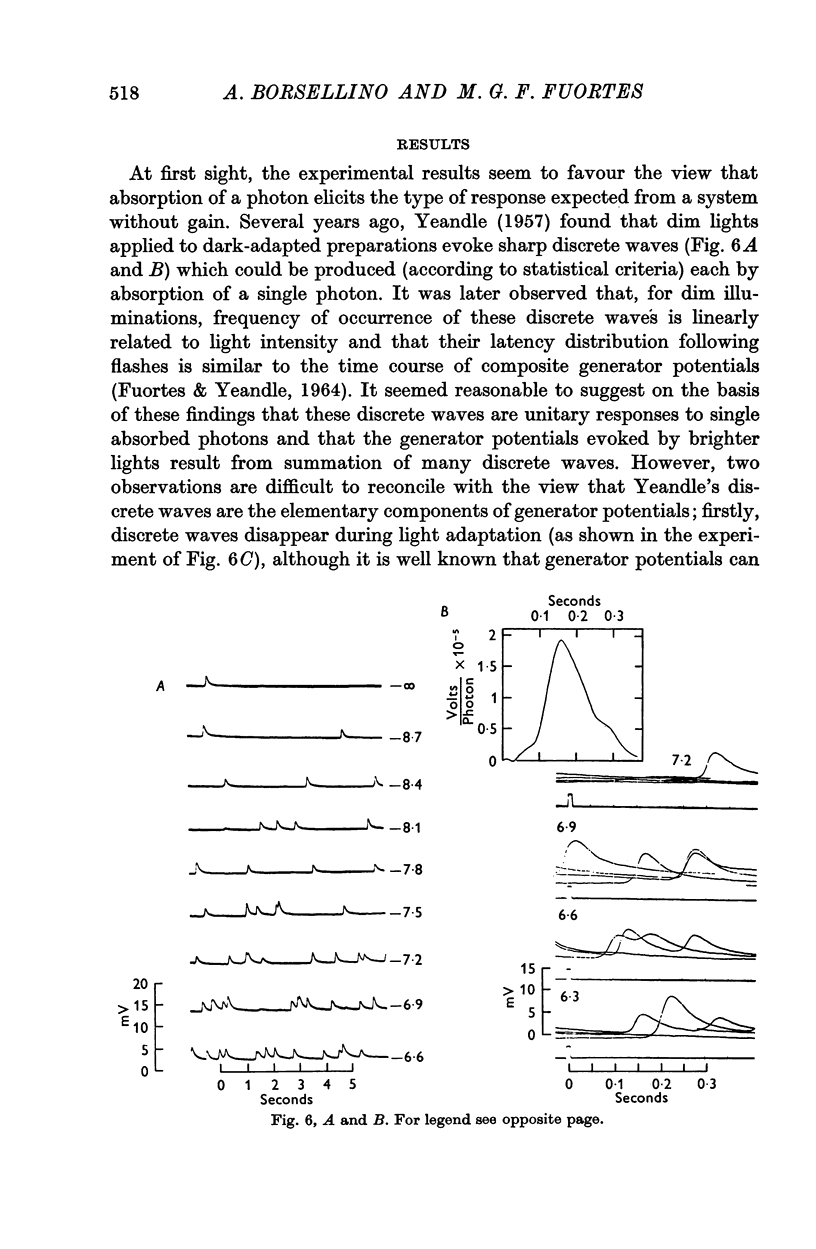
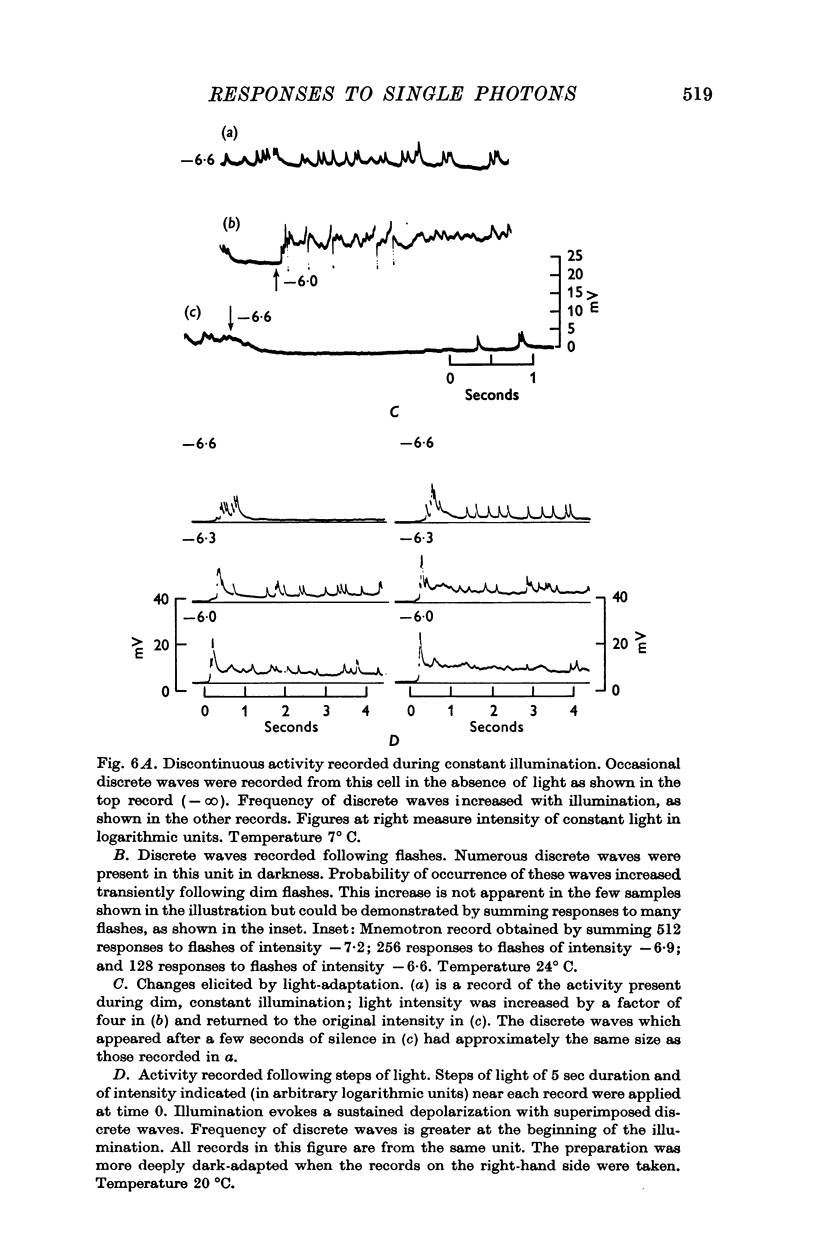

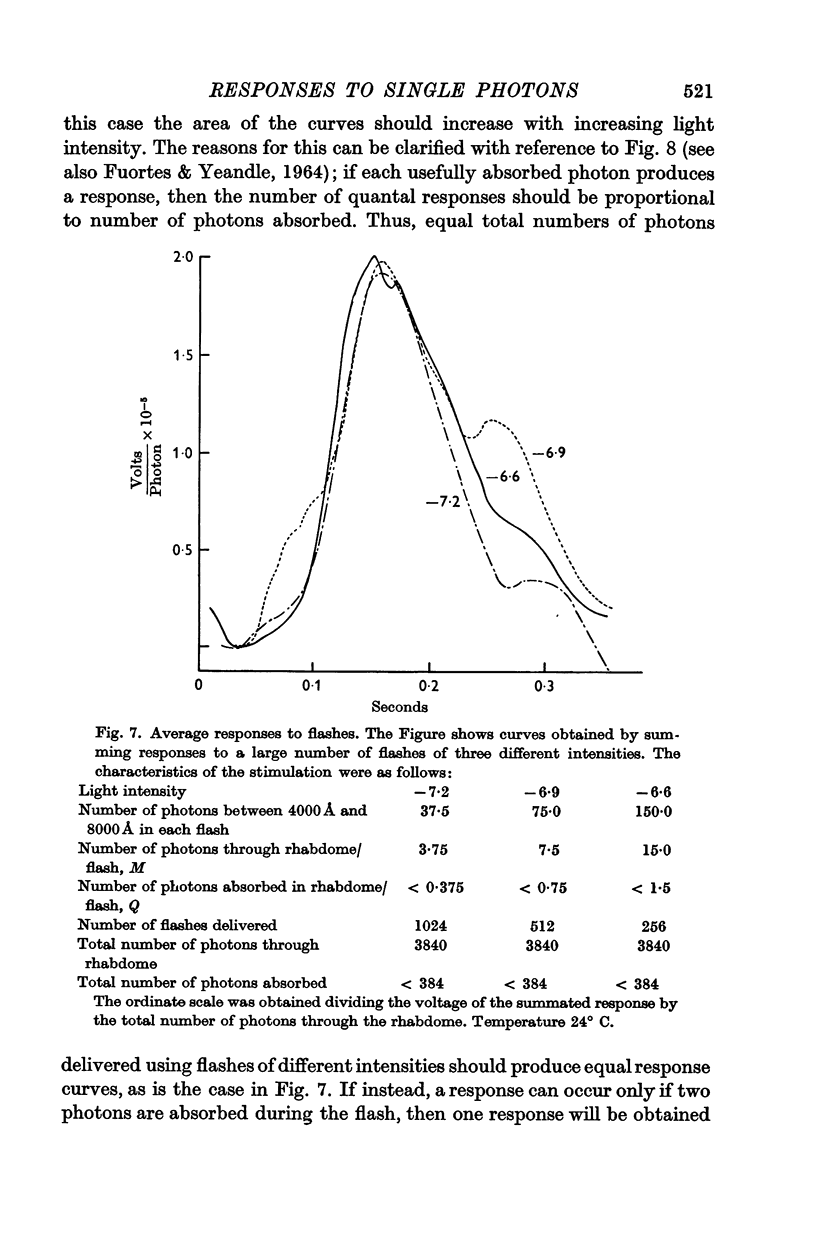
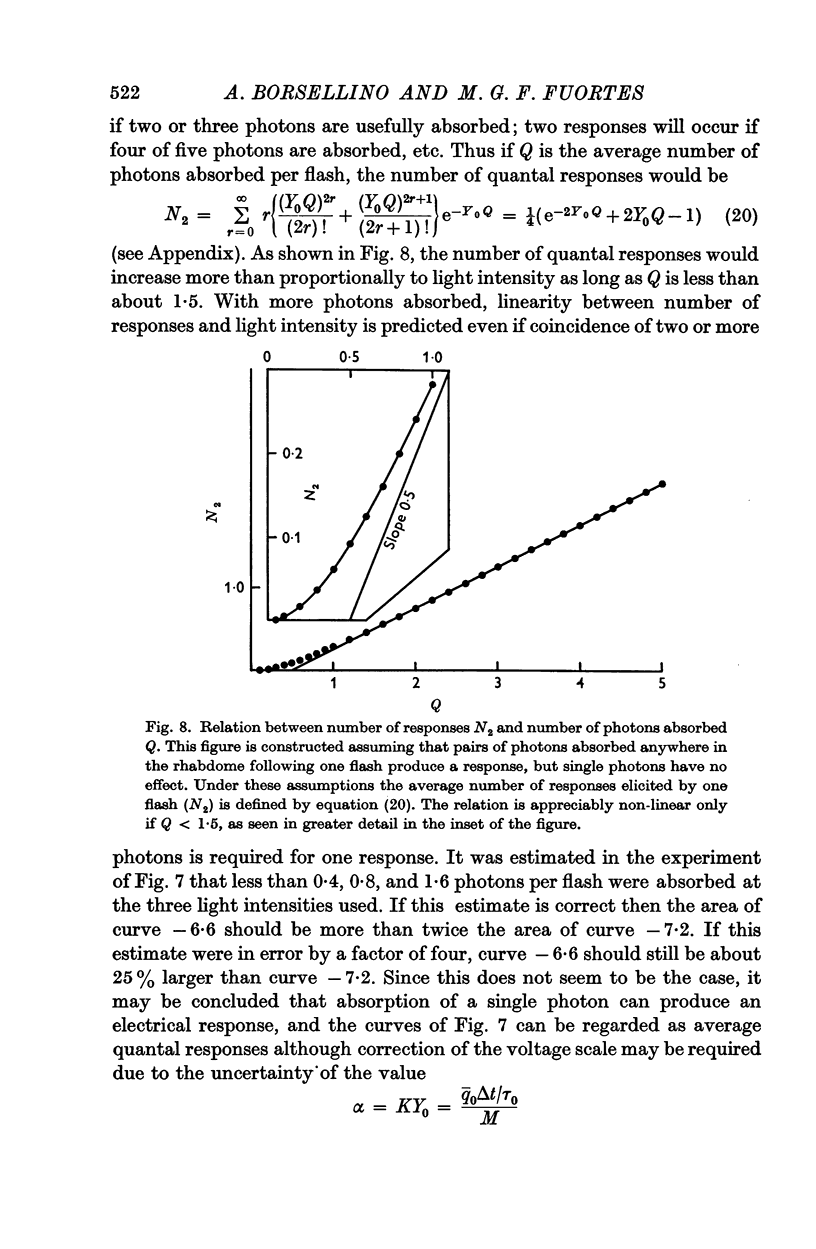

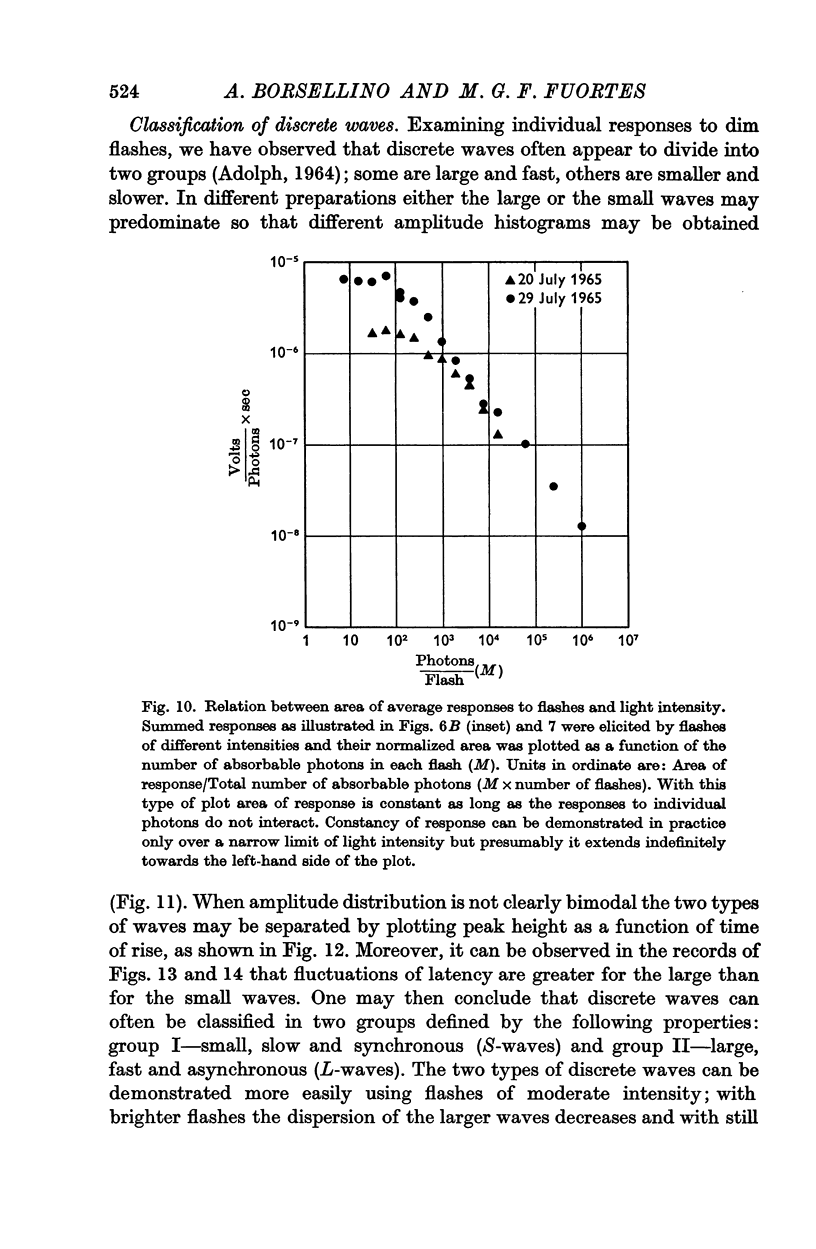
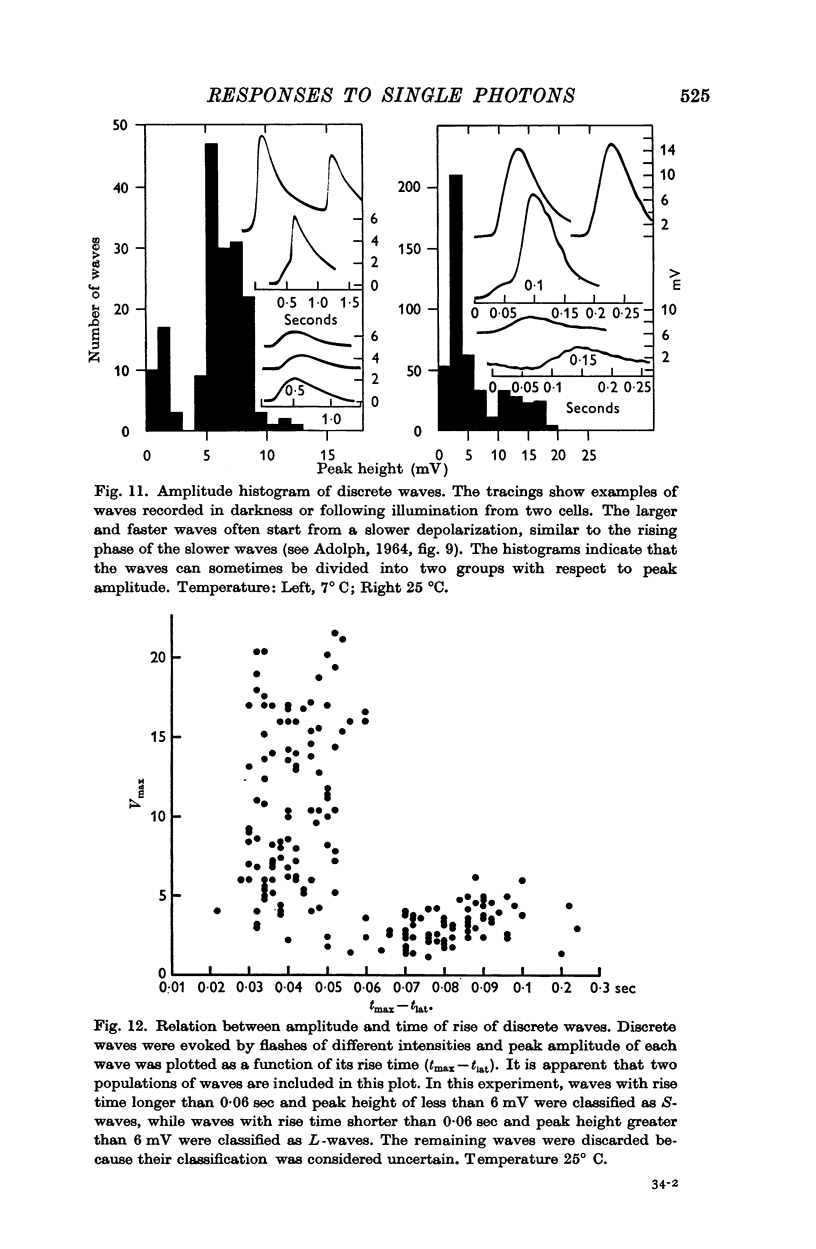
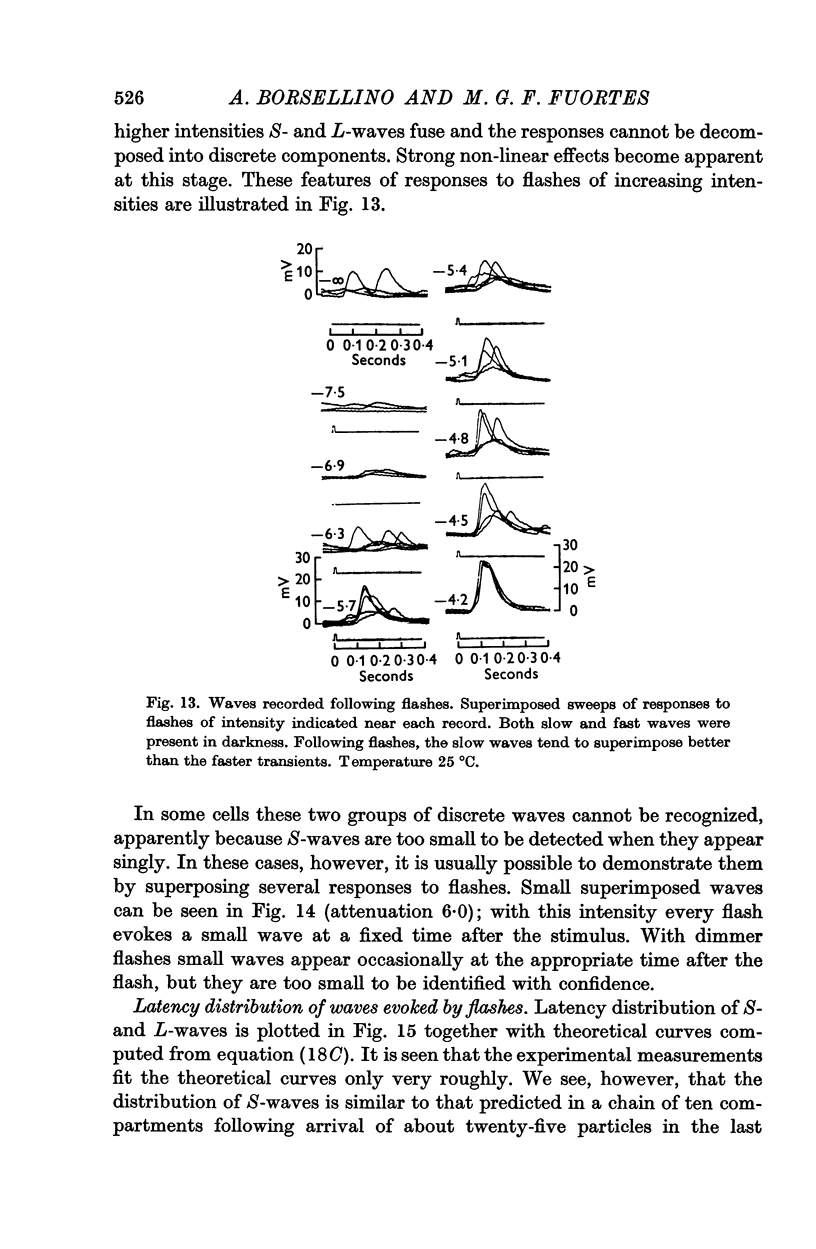
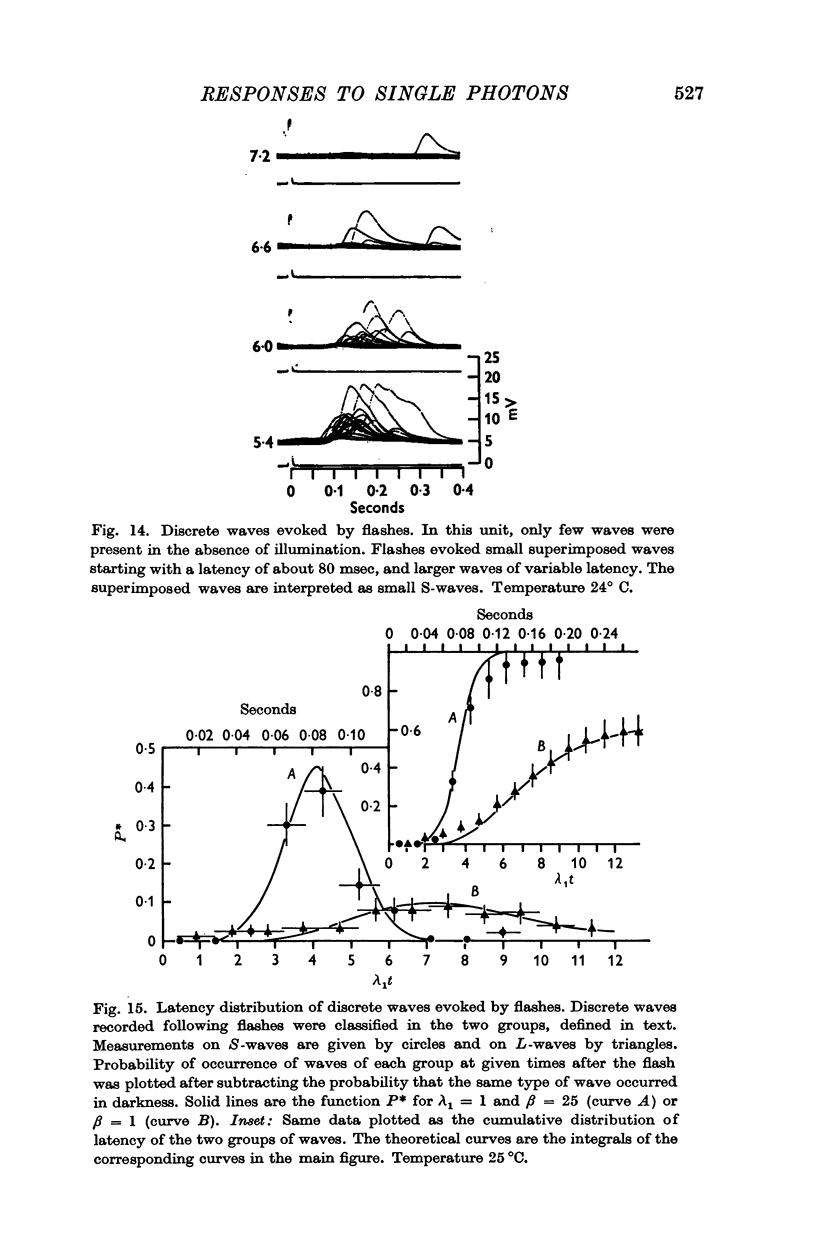
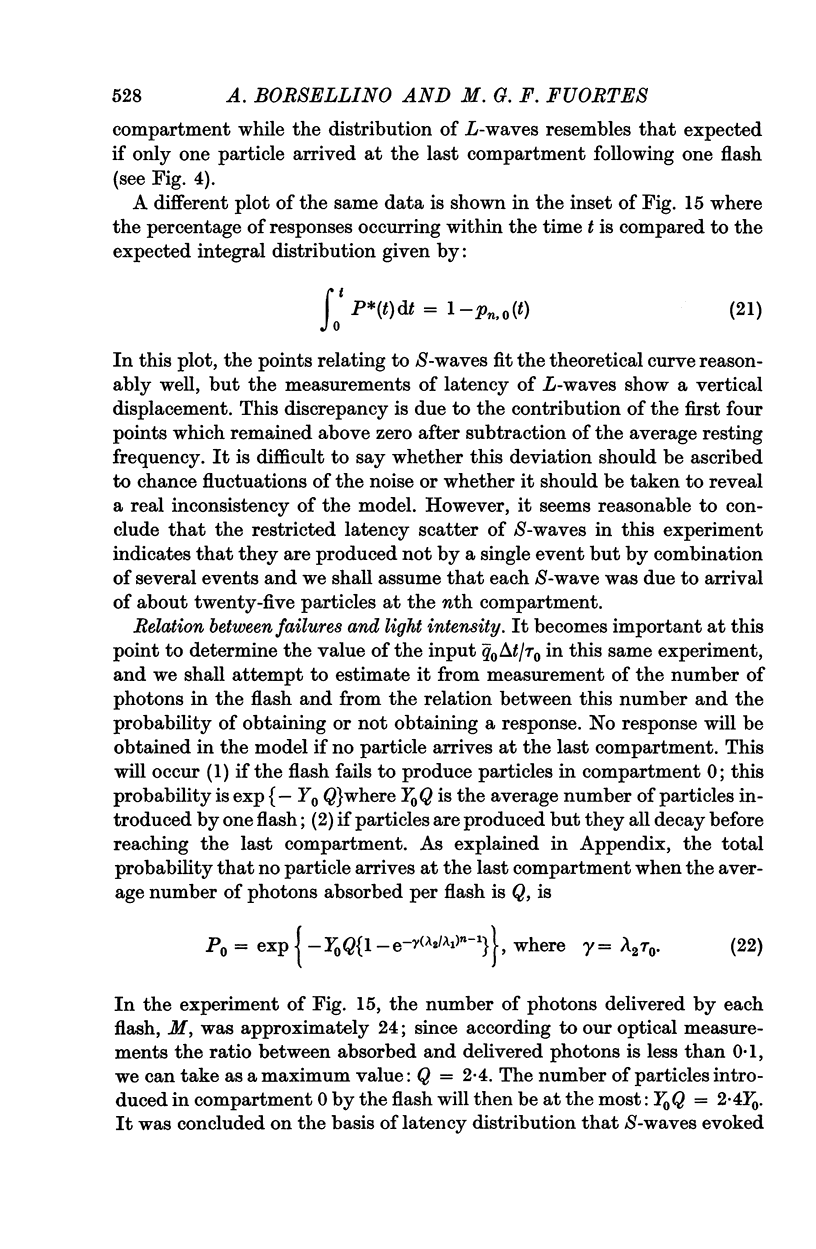
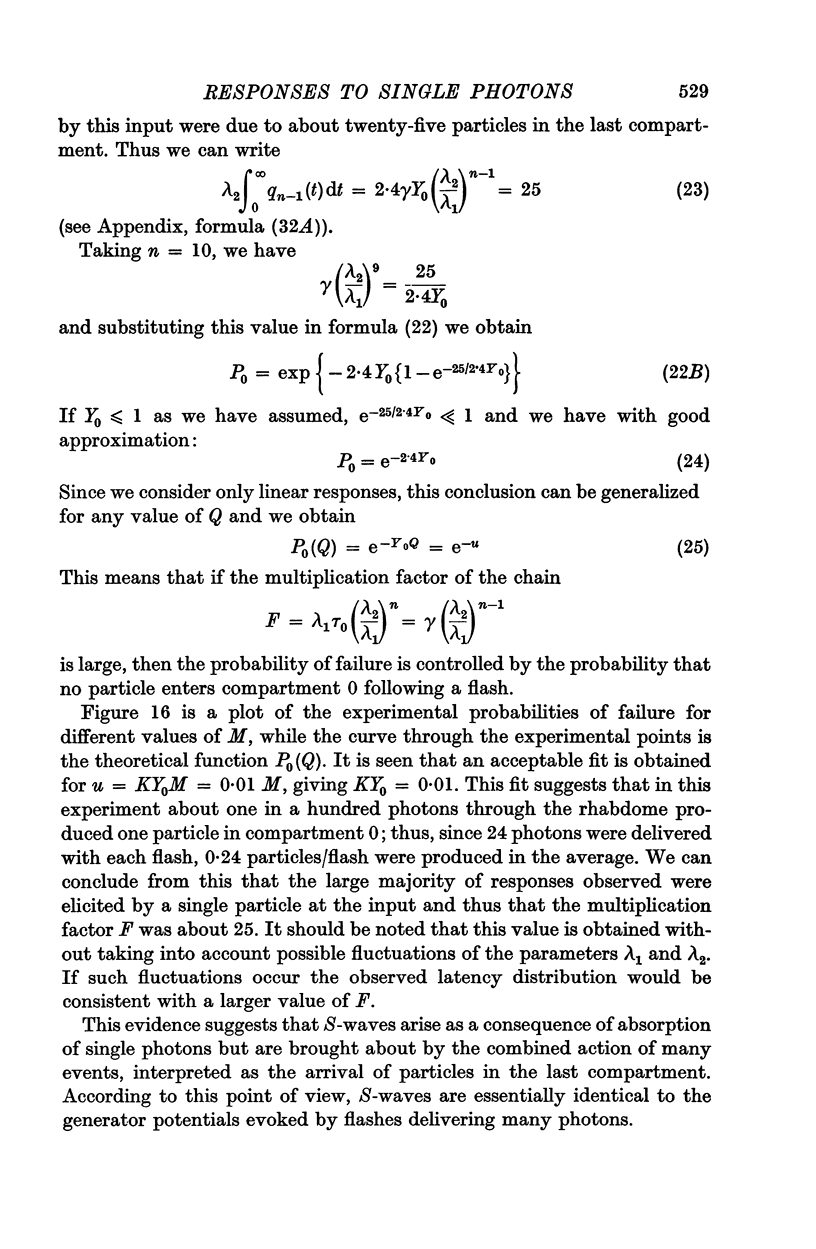
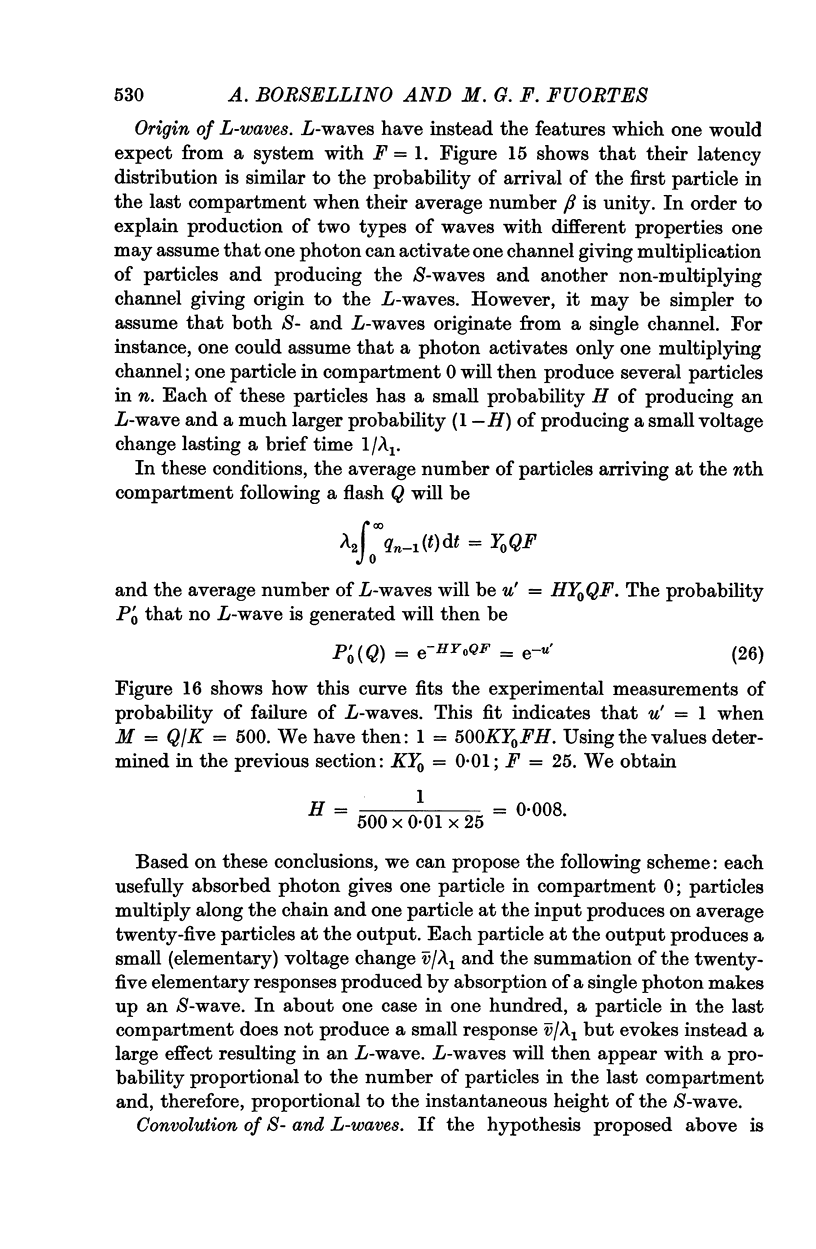

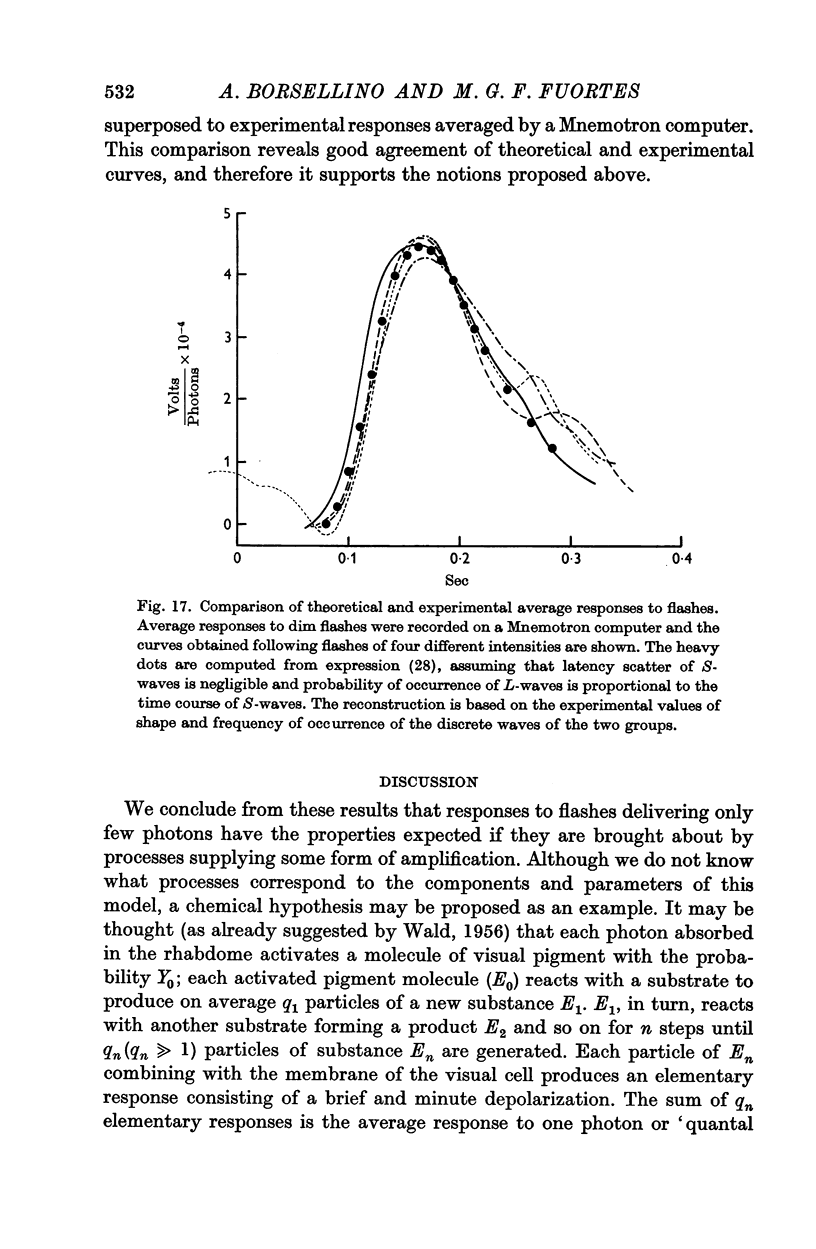
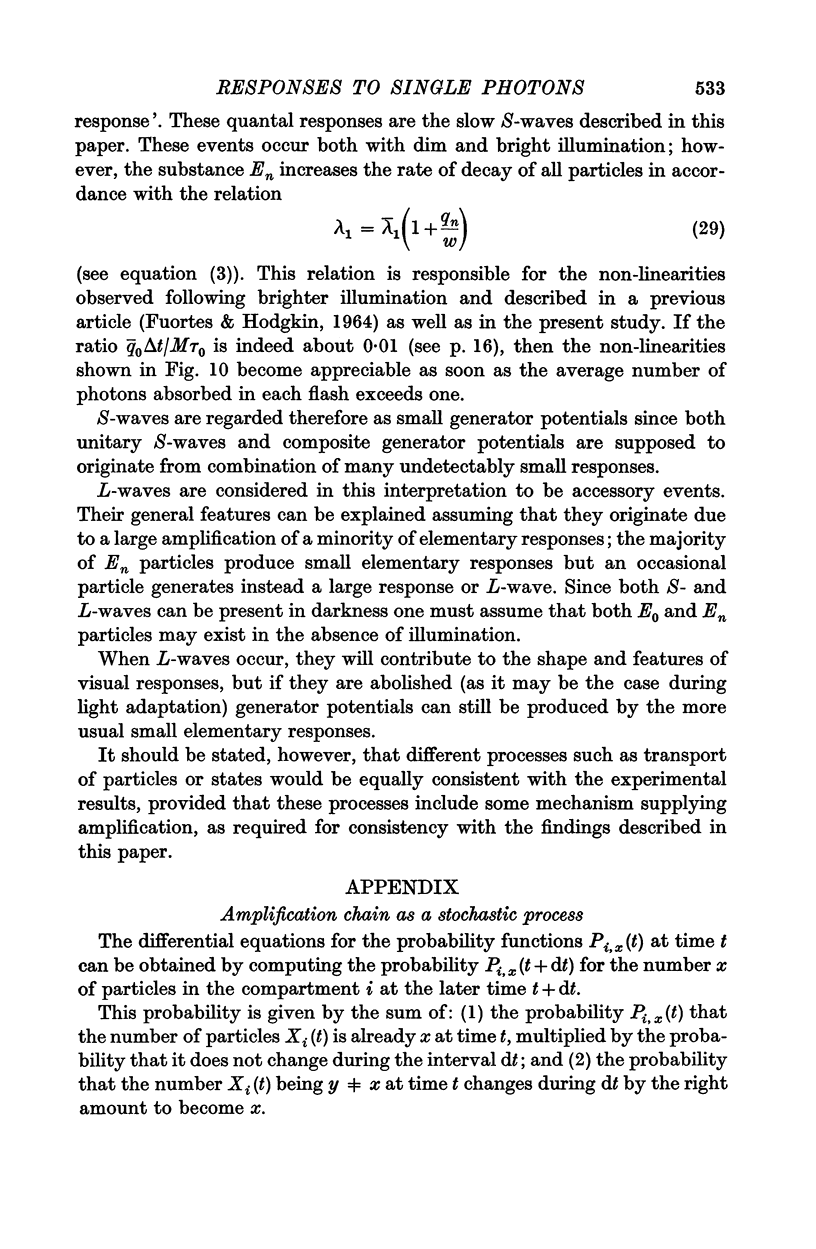


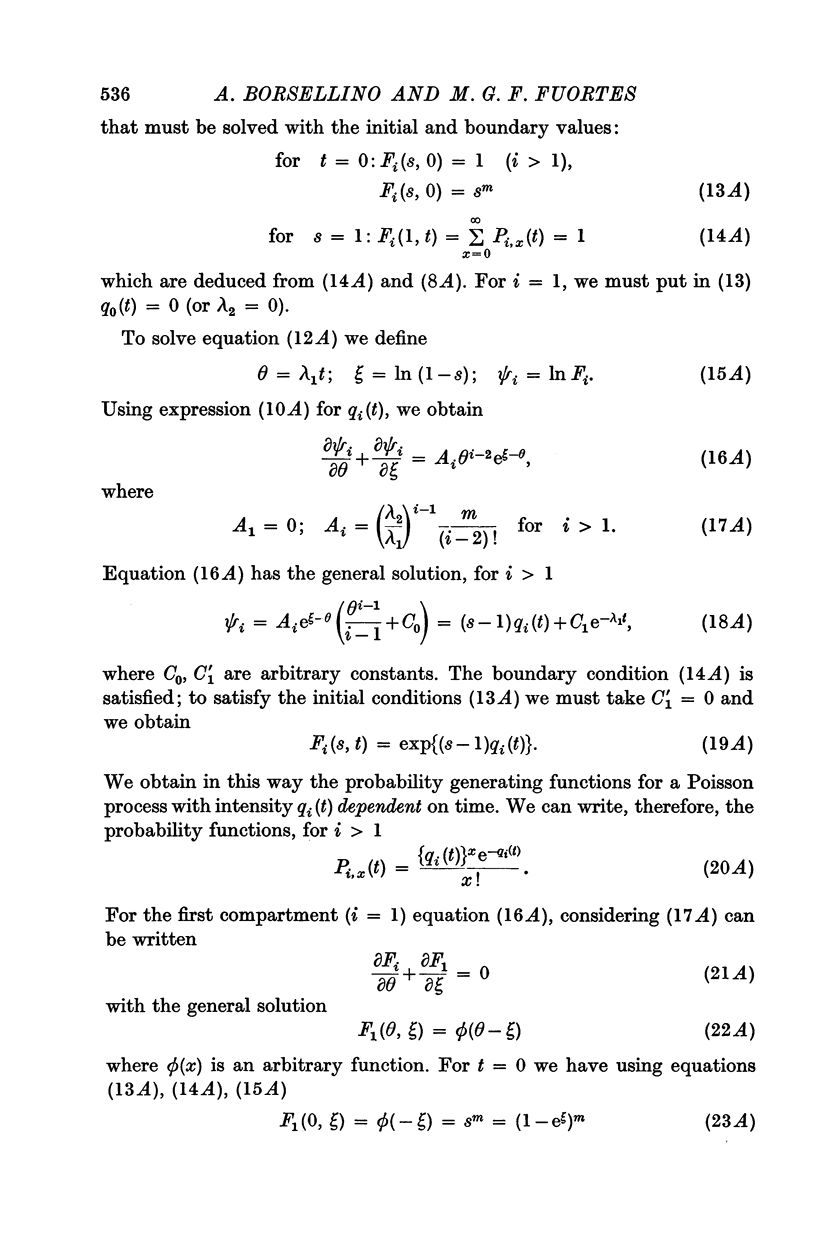
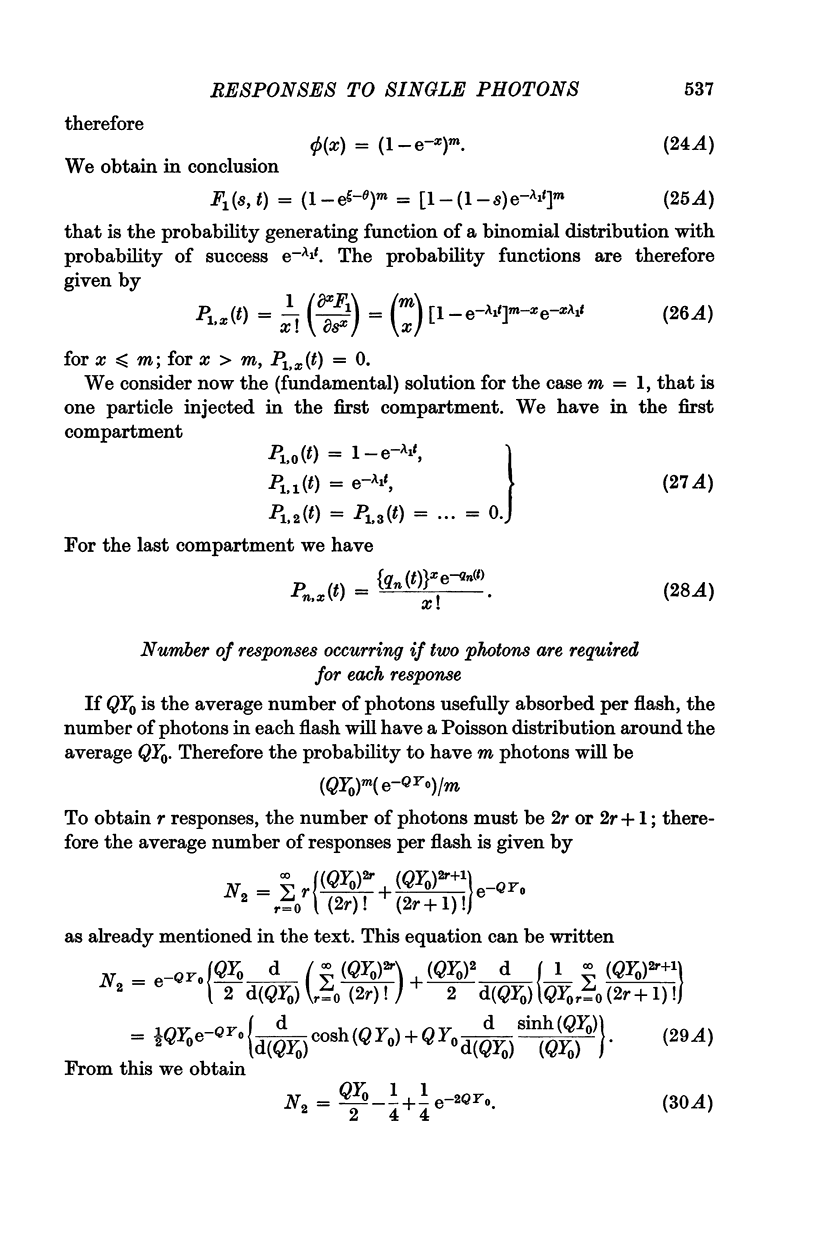
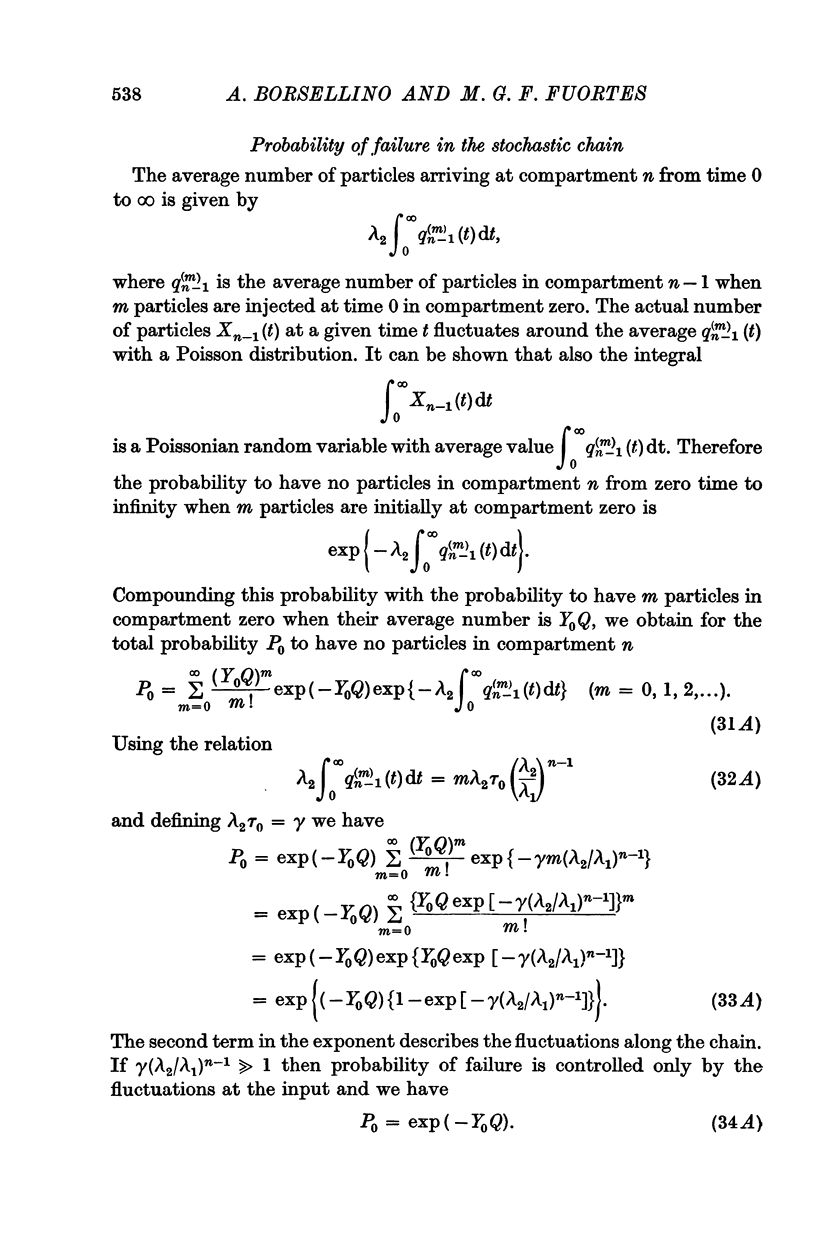

Selected References
These references are in PubMed. This may not be the complete list of references from this article.
- ADOLPH A. R. SPONTANEOUS SLOW POTENTIAL FLUCTUATIONS IN THE LIMULUS PHOTORECEPTOR. J Gen Physiol. 1964 Nov;48:297–322. doi: 10.1085/jgp.48.2.297. [DOI] [PMC free article] [PubMed] [Google Scholar]
- BERMAN M., SHAHN E., WEISS M. F. The routine fitting of kinetic data to models: a mathematical formalism for digital computers. Biophys J. 1962 May;2:275–287. doi: 10.1016/s0006-3495(62)86855-6. [DOI] [PMC free article] [PubMed] [Google Scholar]
- Borsellino A., Fuortes M. G., Smith T. G. Visual responses in Limulus. Cold Spring Harb Symp Quant Biol. 1965;30:429–443. doi: 10.1101/sqb.1965.030.01.042. [DOI] [PubMed] [Google Scholar]
- FUORTES M. G., HODGKIN A. L. CHANGES IN TIME SCALE AND SENSITIVITY IN THE OMMATIDIA OF LIMULUS. J Physiol. 1964 Aug;172:239–263. doi: 10.1113/jphysiol.1964.sp007415. [DOI] [PMC free article] [PubMed] [Google Scholar]
- FUORTES M. G., YEANDLE S. PROBABILITY OF OCCURRENCE OF DISCRETE POTENTIAL WAVES IN THE EYE OF LIMULUS. J Gen Physiol. 1964 Jan;47:443–463. doi: 10.1085/jgp.47.3.443. [DOI] [PMC free article] [PubMed] [Google Scholar]
- HARTLINE H. K., WAGNER H. G., MACNICHOL E. F., Jr The peripheral origin of nervous activity in the visual system. Cold Spring Harb Symp Quant Biol. 1952;17:125–141. doi: 10.1101/sqb.1952.017.01.013. [DOI] [PubMed] [Google Scholar]
- Levinson J. One-stage model for visual temporal integration. J Opt Soc Am. 1966 Jan;56(1):95–97. doi: 10.1364/josa.56.000095. [DOI] [PubMed] [Google Scholar]
- Marimont R. B. Numerical studies of the Fuortes-Hodgkin Limulus model. J Physiol. 1965 Aug;179(3):489–497. doi: 10.1113/jphysiol.1965.sp007675. [DOI] [PMC free article] [PubMed] [Google Scholar]
- NAKA K. I., EGUCHI E. Spike potentials recorded from the insect photoreceptor. J Gen Physiol. 1962 Mar;45:663–680. doi: 10.1085/jgp.45.4.663. [DOI] [PMC free article] [PubMed] [Google Scholar]


